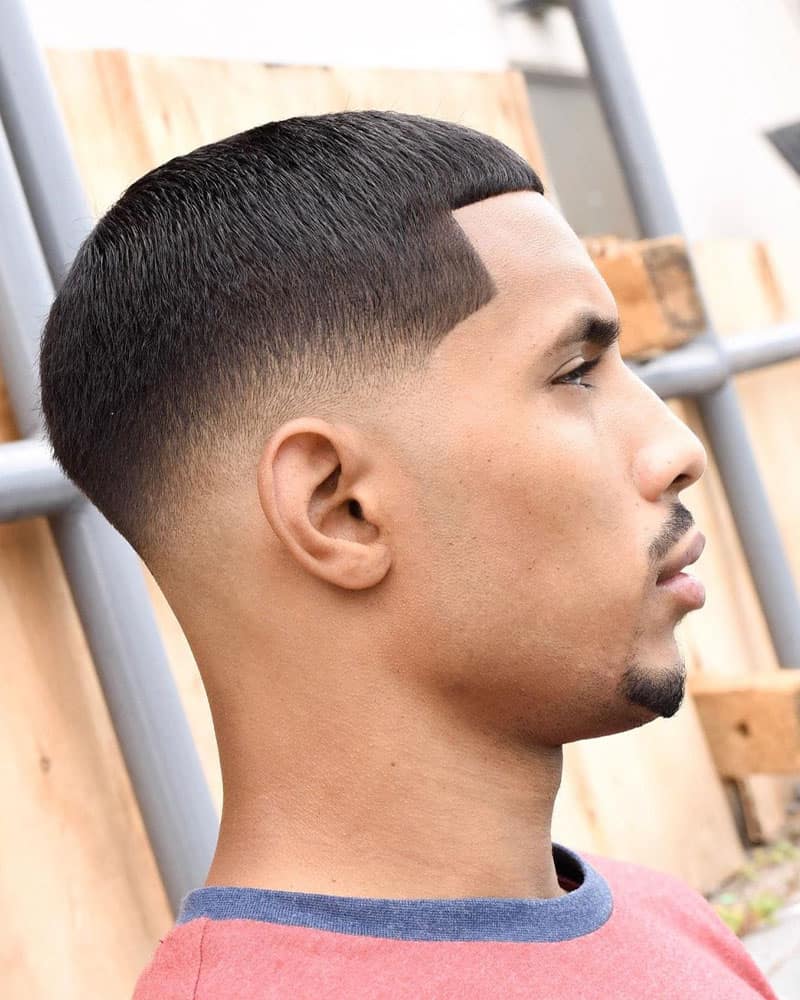Welcome to the Ultimate Guide to Understanding Fades and Tapers: A Style Guide for Parents
Oh, hello there, wonderful parents! Are you ready to dive into the trendy world of haircuts and help your kiddo look their absolute best? You’re in luck! Today, we’re going to unravel the mysteries of two super-popular hairstyles: the Fade and the Taper. Grab a comfy seat, and let’s embark on a style journey that will transform your little one’s look!
What are Fades and Tapers Anyway?
First things first, let’s get the basics down. Fades and tapers are both stylish haircut techniques that give a gradual transition of hair lengths. They’re the go-to choices for a clean, modern look. But don’t worry if they sound the same—they have their distinctions which we will clear up in a jiffy!
Discovering the Fade Cut
Imagine this: The hair on the sides and back of your child’s head gradually disappears like a sunset. That’s what a fade is all about! Starting from almost no hair at the very bottom, it smoothly transitions to longer hair on top. With various fade levels—like low, mid, and high—there’s a perfect fade for every face shape and style preference.
Taper Cut Uncovered
A taper cut also involves gradual change, but it retains more hair than a fade. The transition from short to long starts further up the head, which means the shortest part isn’t down to the skin. This cut delivers a subtle and elegant look that’s amazing for formal occasions or everyday school coolness.
The Differences Between Fades and Tapers
Now that you’ve got a hint of what each style entails, let’s get down to their differences. Understanding this can help you guide your child to a haircut they’ll love and one that fits their individuality like a glove. Here’s a quick rundown:
- Length: Fades typically go shorter than tapers, sometimes down to the skin.
- Starting Point: Tapers often begin higher on the head, whereas fades can start quite low near the hairline.
- End Look: Fades offer a bolder, more distinct look, while tapers are classically understated.
Don’t fret if it feels overwhelming— we’ll cover each style in more depth, including tips on choosing the best option for your darling child’s hair type and face shape. Plus, we’ll even toss in some maintenance advice so you can help them keep that fresh haircut look for days on end!
Choosing the Right Style for Your Child
Choosing a haircut for your child may seem daunting, but it’s all about considering their unique features and personality. Does your kid love a sleek, sporty look or a more classic, neat appearance? Think about their daily activities, too—some styles might be easier to manage for super-active children.
Considering Face Shape
Just like adults, children have various face shapes, and certain cuts complement them better. Rounder faces may benefit from higher fade cuts to add structure, while longer faces might suit tapers to maintain balance. We’ll help you figure it all out with handy visuals and face shape guides!
Style Icons and Inspiration
Having role models helps kids picture their ideal haircut. Show them pictures of celebrities, athletes, or even characters from their favorite shows rocking fades and tapers. This can make the decision process fun and help them express their style wants confidently to their barber or stylist.
Stay Tuned for More Stylish Insights
This is just the beginning, dear parents! We’ve got a lot more to explore, and we can’t wait to share all the tips and tricks about fades and tapers with you. So stick around, and let’s continue this style adventure together. From knowing the best hair care products to the most adorable accessories, we’re here to ensure you and your little one are all set for a fabulous haircut experience!
Don’t miss our next section where we’ll dive deep into the maintenance of fades and tapers, and how to communicate effectively with your child’s hairstylist for that perfect trim. Get ready for a world of confidence-boosting style—let’s make those hair dreams come true!

5 Essential Things Parents Should Know When Preparing for Fades and Tapers
1. Hair Texture and Type Considerations
Not all hair is created equal, and some hairstyles look better on different hair types. Fades, for example, are often favored by parents whose children have thicker or curly hair, as the style can help manage the volume. Tapers, on the other hand, are versatile and can work with almost any hair type. It’s essential to consider texture and growth patterns, such as cowlicks or waves, as these factors can influence the outcome of the haircut.
2. Maintenance and Upkeep
Fades and tapers are relatively low maintenance, but they do require regular touch-ups to keep them looking sharp. A typical timeframe between haircuts is around 2-4 weeks, but this can vary depending on how fast your child’s hair grows. Also, be aware of the styling requirements. For example, some fades may need a dab of hair product for that extra neat look, especially if your child has unruly hair.
3. Pre-Haircut Haircare
Before heading to the salon or barbershop, make sure your child’s hair is clean and free from product build-up. This ensures the hairstylist can accurately assess their natural hair texture and type. Moreover, it can be helpful for your child to wash their hair with a clarifying shampoo to remove any residue, so the stylist can work with a “blank canvas.”
4. Child’s Comfort and Preferences
Make sure your little one is on board with their new look. It’s essential for them to feel comfortable with their hairstyle, as it can significantly affect their confidence and happiness. Discuss different options, show them pictures, and consider their input—after all, it’s their hair! Also, prepare them for the haircutting process itself, ensuring they know what to expect at the salon or barber.
5. Communication with the Hairstylist
Clear communication with the stylist is key to getting the haircut you and your child desire. Be specific about what you’re looking for and bring along pictures if possible. Don’t hesitate to ask the stylist for their opinion on what would work best, considering your child’s face shape and hair type. Remember, they’re the pros and can provide valuable advice to help find the most flattering fade or taper for your kid.
Fade and Taper Variations to Explore
Within the world of fades and tapers, there’s a whole array of styles to discover! From the classic taper with its timeless elegance to the skin fade that offers an edgier vibe, there’s truly something for every type of young individual out there. You can explore variations like the temple fade, the taper fade, and even the burst fade, which is a blend of the two that offers a rounder gradient around the ears. The possibilities are endless!
How to Extend the Fresh Haircut Look
Once you’ve gotten that perfect fade or taper for your child, you’ll want to keep it looking fresh as long as possible. Instruct your kid on how to properly brush or comb their hair and consider investing in a quality hair product that suits their style and hair type. Also, remember to protect their hair during playful activities and sports by using headwear when necessary.
With all this knowledge, dear parents, you’re now well-equipped to navigate the playful and stylish world of kid’s haircuts with confidence. Whether it’s razor-sharp fades or soft, subtle tapers, you know just what to do to ensure your child looks and feels their best! Keep this guide handy for times when you need a quick refresher, and enjoy the fantastic hair adventures ahead with your little trendsetter.
For more great articles please see here. For more information see here
Disclaimer
The articles available via our website provide general information only and we strongly urge readers to exercise caution and conduct their own thorough research and fact-checking. The information presented should not be taken as absolute truth, and, to the maximum extent permitted by law, we will not be held liable for any inaccuracies or errors in the content. It is essential for individuals to independently verify and validate the information before making any decisions or taking any actions based on the articles.




